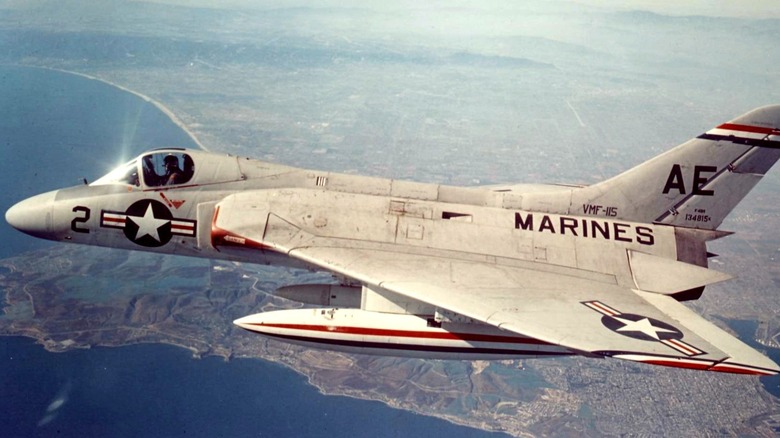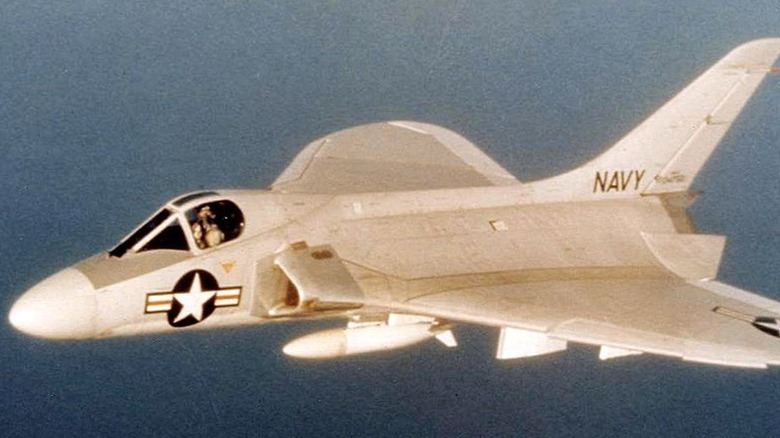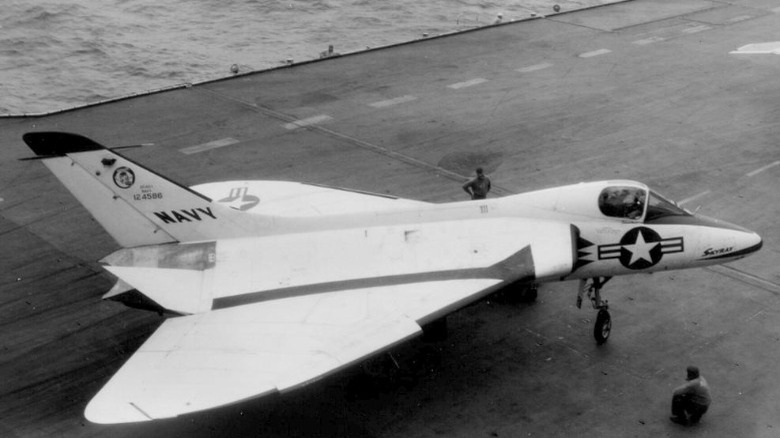The Incredible Capabilities Of The Iconic 1950's Skyray Fighter Jet
The 1950s were turbulent years for the world. It was a time of reflection, taking stock, rebuilding, mourning, and recovering from the devastation of World War II. National boundaries, identities, and relationships had shifted due to the conflict, and sadly and inevitably, new tensions arose. Even countries not directly involved in the conflict could see the world changing.
World War II demonstrated that aerial power could make or break a conflict. In this tricky new chapter for the world, nations would heavily emphasize military technology to defend themselves from and dissuade any threats from would-be aggressors.
During the war, the German Me 262 proved itself a frightening prospect, the very first jet fighter in history. This revolutionary concept would influence the next generations of fighter jets. Over the following decades, nations would produce some exemplary and iconic aircraft. One of the most famous and formidable examples is the Douglas Skyray, acclaimed for its almost unparalleled speed.
Why was the remarkable Douglas Skyray fighter jet created?
Pace and maneuverability are advantages that can prove vital in aerial combat and were exactly how the Me 262 excelled in its limited encounters with Allied aircraft. Key to this was a discovery made by German engineers during its development: delta wings were best suited to withstand the strains of jet-propelled flight.
In 1948, Douglas began work on the F4D-1, which would implement this design concept. It derived its nickname from the characteristic ray-esque shape of its wings, and it had a tremendous task ahead of it. As Enzo Angelucci and Peter Bowers write in "The American Fighter" (via Internet Archive), the US Navy's requirement was for "a short-range, carrier-based delta-wing interceptor fighter, able to shoot down an enemy aircraft at 50,000 feet (15,240 meters) within five minutes of hitting the alarm bell."
The engine intended for use in the aircraft, the Westinghouse XJ40-WE-8, was also technology in progress, so prototype models could not perform at their full potential. Nonetheless, on completion, the Skyray proved to be formidable. The finished model was equipped instead with the Pratt & Whitney J57-P-8. Though this wasn't the initial plan, this was critical to the Skyray's fantastic performance. In late May of 1958, Major N. Le Faivre took just 2 minutes and 36 seconds to climb to 49,221 feet (15,000 meters), breaking several world speed records.
The Skyray's place in jet fighter history
The Skyray was one of the most iconic pieces of hardware in the US Navy's aerial arsenal and its very first supersonic jet. With its blistering pace, it truly excelled in the limited scope of its intended function: to launch from carriers and intercept opposing aerial dangers that could threaten its fleet.
Ultimately, though, this narrow scope held the plane back. As remarkable as the hardware was, the legendary "ten-minute killer" wasn't used for long. By 1964, the Skyray had ceased active service with all branches of the United States military. This doesn't mean that it didn't serve a vital function even after this, though: As NASA reports, a modified follow-up, the F5D-1 Skylancer, saw the light of day only in the form of four prototypes. Though the project was canceled early on, NASA retained two prototype models.
They contributed to the Dyna-Soar program (also ultimately canceled) and were used in developing the troubled Concorde's own supersonic capabilities. For its time, the Skyray was a technological marvel that paved the way for future jets.


